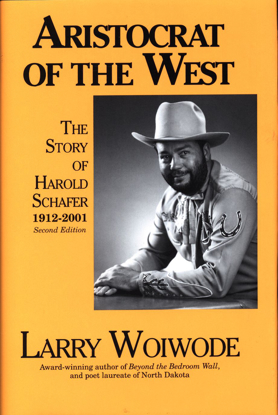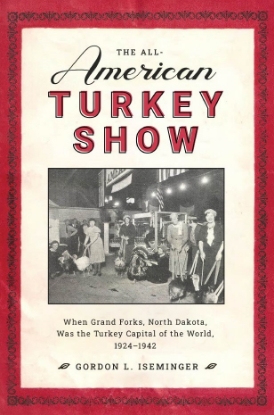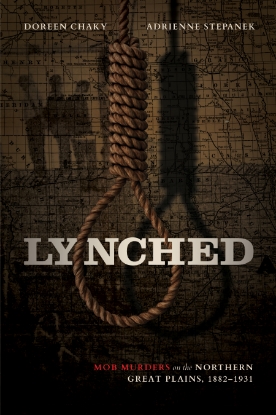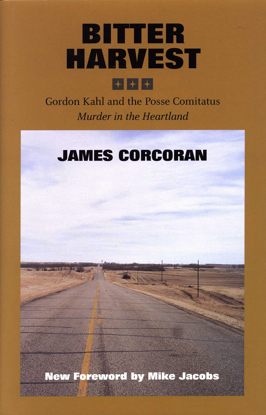Nonfiction
Aristocrat of the West
Growing from the bare prairie of western North Dakota, Schafer created an empire as familiar to Americans as the soap on their shelves, which probably was produced by his Gold Seal Company. As a philanthropist Schafer's enthusiasm and optimism brought Theodore Roosevelt's old cow town of Medora from ruin to a premier tourist attraction. And to the country's political leadership he lent a key business associate as U.S. Secretary of the Interior, and a son as governor of the state.
A wonderful story of a great American grown from the eastern plains.
All-American Turkey Show: When Grand Forks, North Dakota, Was the Turkey Capital of the World, 1924-1942, The
The All-American Turkey show, which met in Grand Forks, North Dakota, from 1924 to 1942, brought people from across the contiguous US to the northern plains to exhibit their prize turkeys. The show served multiple purposes, including encouraging farmers to diversify production and increase their incomes by raising turkeys. Mostly farmwives took up the call, managing the farm’s turkey flock; two-thirds of the turkeys exhibited at the shows were raised and exhibited by women. They also attended the Education Sessions at the shows, where they learned how to care for their flocks and to select breeding stock in order to bring their turkeys as close as was humanly possible to the exacting standards adhered to by the show’s judges.
Another purpose of the shows was to encourage consumers to eat more turkey and to eat it throughout the year, not just during the holiday season. In part, to fulfill this purpose, the shows introduced competition in dressed turkeys and boxed and canned turkeys.
Finally, the shows were intended to be truly “All-American” by providing an opportunity for “turkey folk” to gather for a week each year to compete for more awards than were offered at any other poultry show, renew acquaintances, make new friends, and enjoy each other’s company. That the shows succeeded handsomely in this purpose was evidenced by exhibitors from eighteen turkey-producing states and five Canadian provinces.
The All-American Turkey Show was done in by its success. By the eve of World War II, its purposes had been fulfilled and the shows were being held for little reason other than that there seemed to be no graceful way to discontinue them. It was the war, with its shortages of labor, gasoline, and rubber, that brought the All-American Turkey Shows to a merciful end. Shows were suspended for the duration of the war on the assumption they would begin again at war’s end. They did not, and the All-American Turkey Shows passed into history.
ISBN: 978-1-946163-55-4
Page Count: 452
Picture Count: 12-page color photo gallery, 37 black and white images
Index: Yes
Bibiliography: Yes
Hardcover
Publication Date: April 13, 2024
All-American Turkey Show: When Grand Forks, North Dakota, Was the Turkey Capital of the World, 1924-1942, The
The All-American Turkey show, which met in Grand Forks, North Dakota, from 1924 to 1942, brought people from across the contiguous US to the northern plains to exhibit their prize turkeys. The show served multiple purposes, including encouraging farmers to diversify production and increase their incomes by raising turkeys. Mostly farmwives took up the call, managing the farm’s turkey flock; two-thirds of the turkeys exhibited at the shows were raised and exhibited by women. They also attended the Education Sessions at the shows, where they learned how to care for their flocks and to select breeding stock in order to bring their turkeys as close as was humanly possible to the exacting standards adhered to by the show’s judges.
Another purpose of the shows was to encourage consumers to eat more turkey and to eat it throughout the year, not just during the holiday season. In part, to fulfill this purpose, the shows introduced competition in dressed turkeys and boxed and canned turkeys.
Finally, the shows were intended to be truly “All-American” by providing an opportunity for “turkey folk” to gather for a week each year to compete for more awards than were offered at any other poultry show, renew acquaintances, make new friends, and enjoy each other’s company. That the shows succeeded handsomely in this purpose was evidenced by exhibitors from eighteen turkey-producing states and five Canadian provinces.
The All-American Turkey Show was done in by its success. By the eve of World War II, its purposes had been fulfilled and the shows were being held for little reason other than that there seemed to be no graceful way to discontinue them. It was the war, with its shortages of labor, gasoline, and rubber, that brought the All-American Turkey Shows to a merciful end. Shows were suspended for the duration of the war on the assumption they would begin again at war’s end. They did not, and the All-American Turkey Shows passed into history.
ISBN: 978-1-946163-67-7
Page Count: 452
Picture Count: 12-page color photo gallery, 37 black and white images
Index: Yes
Bibiliography: Yes
Paperback
Publication Date: April 13, 2024
Bakken: An Archaeology of an Industrial Landscape
The Bakken oil patch ranks among the great achievements of the contemporary age. The arrival of fracking technology in western North Dakota led to an industrial renaissance that transformed sleepy farm communities into crucial cogs in the global extractive economy. Fracking technology made the area a global destination for roughnecks, petroleum engineers, pipeline “cats,” fishers (who “fish” for tools and other objects accidentally dropped down wells), truck drivers, carpenters, contractors, and electricians as well as journalists, adventure scientists, academic scholars, photographers, and filmmakers. The bustle of heavy industry and a landscape of dramatic contrasts present a magnetic attraction for the adventurous traveler. Pack your camera, your sulfur dioxide sensor, a pair of steel-toed boots, and your flame-resistant Carhartt clothing as you get ready for a unique journey to a frontier landscape forged by industry.
Lynched: Mob Murders on the Northern Great Plains, 1882-1931
With a rope and a mission, like-minded neighbors found lynching to be a simple and efficient way to obtain what they regarded as certain justice.
Northern plains lynch mobs shared a belief that what they did resulted in swift and sure justice, which the established courts would not or could not provide. Juries might be reluctant to impose the death penalty, and if a suspect were tried, found guilty, and sentenced to life in prison, they might be prematurely pardoned. Perpetrators might successfully evade punishment by using insanity pleas. With a rope and a mission, like-minded neighbors found lynching a simple and efficient way to obtain what they regarded as certain justice.
The distrust many citizens had of the legal profession seemed rooted in the perception that lawyers and the complicated law they practiced appeared to offer more justice to criminals than to crime victims. That distrust extended to jurors considered too soft-hearted to mete out appropriate punishment. Do-it-yourself justice among the lynch mobs seemed fairer and quicker than waiting for what they considered unreliable juries, lawyers, and judges. Perhaps those who disparaged lawyers and the rule of law—and sought to bypass them with a rope—simply did not understand the complexities of American jurisprudence. Based on centuries-old English common law, the court system was malleable and did respond to changing ideas and mores, but these changes came slowly. The people who made up the mobs were unwilling to patiently await such incremental adjustments.
Lynched examines the events surrounding, and the media portrayal of, nine mob murders that resulted in eleven deaths on the northern Great Plains from 1882 to 1931. Revealing a disturbing part of history, Lynched aims at uncovering the stories of these lynchings while shedding light on the volatile mentality of the communities where such injustice happened.
ISBN: 978-1-946163-59-2
Page Count: 320
Picture Count: 29 black and white images
Index: Yes
Bibiliography: Yes
Hardcover
Publication Date: April 13, 2024
Bitter Harvest
James Corcoran tells the story of Gordon Kahl and the Posse Comitatus, using captivating narrative with vivid imagery. Sunday, February 13, 1983, was a sunny day in Medina, North Dakota--a seemingly peaceful church-going winter day. But hate politics was broiling in secret locations and the Heartland provided cover for those who wanted to take the law into their own hands. "Something terrible, and terribly important, was taking place," writes Corcoran. Ever a page-turner, reflect again on this story of violence and how a group of people can construct an alternative version of the law and the truth.





























